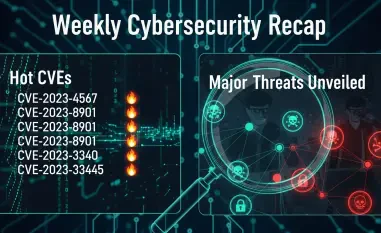The cybersecurity industry is facing a significant challenge: a persistent gender gap. Despite the growing demand for cybersecurity professionals, women remain underrepresented in this field. This disparity not only limits opportunities for women but also hampers the industry’s ability to effectively combat emerging threats. Diverse teams, which bring varied perspectives and experiences, are crucial for enhancing the industry’s threat response capabilities. This article explores the importance of gender diversity in cybersecurity and outlines strategies to foster a more balanced workforce.
The Current State of Gender Diversity in Cybersecurity
Underrepresentation of Women
The cybersecurity sector remains predominantly male, with women holding fewer than one in five cybersecurity roles in the US and just one in three roles worldwide. This underrepresentation is a significant concern, as it limits the pool of talent available to address the growing number of cyber threats. The lack of gender diversity also means that the industry is missing out on the unique perspectives and problem-solving approaches that women can bring to the table.
Addressing this issue requires a comprehensive effort to increase the presence of women in cybersecurity roles. Efforts must focus on not just recruiting women but also retaining them in the industry. Organizations need to create an environment where women feel welcomed and valued, which involves tackling unconscious biases and ensuring equal opportunities for advancement. Only by addressing these underlying issues can the cybersecurity industry begin to close the gender gap and take full advantage of the diverse skill sets that women bring.
Impact on Threat Response
Diverse teams are more innovative and effective at detecting and mitigating threats. When team members come from different backgrounds and have varied experiences, they are better equipped to identify vulnerabilities and develop comprehensive solutions. Studies have shown that organizations with diverse teams are more likely to outperform their fewer diverse counterparts in terms of threat detection and response. Therefore, closing the gender gap in cybersecurity is not just a matter of fairness; it is essential for the industry’s success.
The positive impact of diverse teams extends beyond just improved threat response. A varied workforce fosters a culture of creativity and innovation, leading to more effective problem-solving and better overall performance. Moreover, as cyber threats become increasingly complex and sophisticated, the need for a wide range of perspectives and expertise becomes even more critical. By promoting gender diversity, the cybersecurity industry can enhance its resilience and adaptability, making it better prepared to handle the challenges of the future.
Strategies for Promoting Gender Balance
Inclusive Hiring Practices
One of the most effective ways to promote gender balance in cybersecurity is through inclusive hiring practices. Employers should adopt skill-based hiring approaches and use gender-neutral language in job descriptions. This helps to ensure that job postings are appealing to a broader range of candidates. Additionally, creating diverse interview panels and avoiding questions about previous salaries can help to eliminate biases and ensure fairer hiring practices.
Inclusive hiring practices also involve actively seeking out and encouraging female candidates to apply for positions in cybersecurity. Employers can partner with organizations that focus on supporting women in tech, attend diversity-focused career fairs, and offer internship programs specifically designed for women. By taking these proactive steps, companies can create a pipeline of talented female professionals ready to enter the cybersecurity workforce. Moreover, ongoing training and awareness programs for hiring managers can help to address any unconscious biases that may persist in the hiring process, further promoting a more inclusive culture.
Flexible Work Policies
Flexible work policies are another crucial strategy for fostering gender balance. Women often face disproportionate caregiving burdens, which can make it challenging to pursue demanding careers in cybersecurity. By offering flexible working arrangements, such as remote work options and flexible hours, employers can make it easier for women to balance their professional and personal responsibilities. This not only helps to attract more women to the field but also supports their long-term retention.
In addition to flexible work hours, offering robust parental leave policies and childcare support can further alleviate the challenges that women face. Company cultures that prioritize work-life balance and understand the importance of family responsibilities will be more attractive to female professionals. Implementing these policies shows a commitment to supporting all employees’ needs, ultimately leading to a more diverse and effective workforce. By creating an environment where women can thrive without sacrificing their personal lives, the cybersecurity industry can retain and nurture valuable talent.
The Role of Mentorship and Training Programs
Importance of Mentorship
Mentorship programs are vital for retaining women in cybersecurity. These programs provide guidance, support, and networking opportunities, helping women to navigate the challenges of the industry and advance in their careers. Mentorship can be particularly beneficial for women in pre- and middle-management roles, as it gives them the confidence and support needed to pursue leadership positions.
Mentorship also helps to break down barriers by providing women with role models and allies within the industry. Female mentors who have successfully navigated the cybersecurity landscape can offer invaluable insights and advice, inspiring the next generation of women to pursue and persist in their careers. Companies should encourage mentorship relationships by creating formal programs that match mentors with mentees, providing structured opportunities for learning and growth. By investing in these relationships, organizations can build a more supportive and empowering environment for women in cybersecurity.
Successful Initiatives
Several successful initiatives highlight the impact of mentorship and training programs. For example, LinkedIn’s “Women in Tech” program has been effective in fostering internal talent and challenging gender imbalances. By providing mentorship and professional development opportunities, such programs help to create a more supportive environment for women in cybersecurity.
Other notable initiatives include coding boot camps and cybersecurity workshops specifically targeted at women. These programs offer technical training and skills development, equipping women with the expertise needed to excel in cybersecurity roles. Additionally, networking events and conferences focused on women in cybersecurity provide platforms for sharing knowledge, experiences, and opportunities. By participating in and supporting these initiatives, companies can contribute to a broader cultural shift towards greater inclusion and diversity in the industry.
Raising Awareness and Education
Promoting Cybersecurity Careers
Raising awareness about the accessibility and attractiveness of cybersecurity careers is essential for encouraging more women to enter the field. Targeted education and outreach programs, such as workshops and coding camps, can help to demystify cybersecurity and highlight the diverse career paths available. By showcasing female role models and emphasizing the relevance of soft skills, these initiatives can inspire young women to consider careers in cybersecurity.
Educational institutions play a crucial role in promoting cybersecurity as a viable career option for women. Schools and universities can integrate cybersecurity topics into their curricula, offer scholarships and grants for female students, and create clubs or societies focused on cybersecurity. Furthermore, partnerships between educational institutions and industry can provide students with hands-on experience, internships, and mentorship opportunities. By building a strong foundation early on and providing continuous support, more women will be encouraged to pursue and succeed in cybersecurity careers.
Early Education and STEM Encouragement
Encouraging girls to pursue STEM fields from an early age is another critical strategy. Countries like Canada and the UK have made significant progress in closing the gender gap through targeted education initiatives and scholarships. By fostering an interest in STEM subjects and providing support throughout their educational journey, these programs help to build a pipeline of talented women ready to enter the cybersecurity workforce.
Creating an inclusive and encouraging environment in schools is vital for nurturing girls’ interest in STEM. This involves training teachers to recognize and challenge gender stereotypes, providing hands-on learning experiences, and encouraging girls to participate in science and technology competitions. Additionally, community programs and after-school clubs can offer further opportunities for girls to explore STEM subjects in a fun and supportive setting. By continuously promoting STEM education and providing resources, we can inspire more girls to pursue careers in fields like cybersecurity.
Progress and Effective Approaches
Notable Progress in Certain Countries
Some countries have made notable progress in increasing the share of women in the cybersecurity workforce. For instance, Brazil, Poland, and Germany have implemented effective approaches to promote gender diversity. These countries have focused on creating supportive environments for women through targeted initiatives and policies.
These initiatives often include government-supported programs aimed at increasing female participation in STEM education and careers. By investing in science and technology education for girls, implementing gender equality policies, and offering incentives for companies to hire and promote women, these countries have made strides in reducing the gender gap. The success of these approaches demonstrates the importance of a coordinated effort between government, industry, and educational institutions to foster a more inclusive cybersecurity workforce.
Collaboration for Success
The cybersecurity industry is grappling with a notable issue: a persistent gender gap. Despite the increasing demand for cybersecurity experts, women continue to be significantly underrepresented in this field. This gender disparity not only restricts job opportunities for women but also hampers the industry’s ability to effectively address and combat emerging cyber threats. Diverse teams, which integrate varied perspectives and experiences, are essential for improving the industry’s threat response capabilities. Research has shown that teams with greater diversity are more innovative and effective in problem-solving. Women bring unique insights and approaches that can enrich and strengthen cybersecurity strategies. To bridge this gender gap, companies must implement targeted initiatives to attract and retain more women in cybersecurity roles. These strategies include promoting STEM education for girls, offering mentorship programs, and creating an inclusive workplace culture that supports career growth for women. By fostering gender diversity, the cybersecurity industry can enhance its overall effectiveness and resilience against evolving threats.













